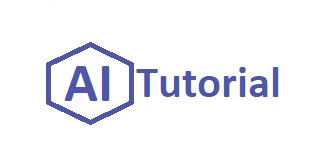🤖 Introduction to AI Agents
AI agents are autonomous software tools that perform tasks, make decisions, and interact with their environment intelligently and rationally.
They use artificial intelligence to learn, adapt, and take action based on real-time feedback and changing conditions.
AI agents can work on their own or as part of a larger system, continuously learning and evolving from the data they process.
🤖 What Are AI Agents?
AI agents bring a new level of adaptability by placing a Large Language Model (LLM) in charge of control logic.
Unlike traditional programmatic systems, AI agents can:
- 🧠 Break down complex problems
- 🗺️ Create dynamic, real-time plans
- 🔁 Adjust strategies iteratively to achieve a goal
🧱 Monolithic Models
Definition: A monolithic model’s abilities are limited to the data it was trained on. It cannot access real-time or personal data, which restricts the types of tasks it can handle.
⚠️ Limitations of Monolithic Models
- Restricted by static training data — lacks real-world or personal context.
- Expensive to update — adapting the model requires retraining or large-scale fine-tuning.
📌 Example Scenario: Planning a Vacation
- If you ask a monolithic model, “How many vacation days do I have left?”, it cannot answer — it has no access to your personal data or HR systems.
- While helpful for general tasks like summarizing documents or drafting emails, monolithic models are much more powerful when integrated with real-world systems.
🧩 Introduction to Compound AI Systems
Compound AI integrates language models with existing tools, APIs, and databases to produce more dynamic and accurate outputs.
Example: A query like “How many vacation days do I have left?” can trigger:
- Model generates a search query.
- System retrieves data from the user’s HR database.
- Model responds: “Maya, you have ten days left in your vacation database.”
⚙️ Principles of System Design
- Modular design: models, tools, verifiers, databases.
- Flexible and faster to adapt than retraining large models.
⚠️ Limitations of Traditional Compound Systems
These systems often follow rigid control logic. If a user asks something outside the designed workflow — like the weather — a vacation system cannot respond meaningfully.🤖 What Are AI Agents?
AI agents bring a new level of adaptability by placing a Large Language Model (LLM) in charge of control logic.
Unlike traditional programmatic systems, AI agents can:
- 🧠 Break down complex problems
- 🗺️ Create dynamic, real-time plans
- 🔁 Adjust strategies iteratively to achieve a goal
⚖️ Comparison of Approaches
🧱 Programmatic Systems
“Think fast, act as programmed, follow predefined instructions.”
🧠 Agentic Systems
“Think slow, plan thoughtfully, adjust as needed, and solve problems iteratively.”
🧠 Core Capabilities of LLM Agents
🧩 Reasoning
The model plans and reasons through each step to solve a problem—just like a human thinking out loud.⚙️ Acting
LLM agents interact with external systems and tools, including:- 🌐 Search engines or database queries
- 🧮 Calculators for computations
- 🔌 APIs or other models (e.g., translation or image generation)
